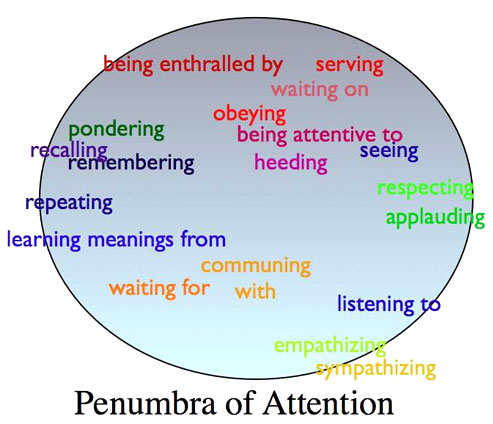This blog focuses on the coming of the Attention Economy. Every so often, I shall remind new readers of what this term means.
The basic idea is that we are moving toward a new kind of economy, wildly different from any before.
An economy in this sense is system of actions and transactions of some kind involving scarce but desirable or necessary entities, with the multiplicity of such transactions intricately tying an entire society or several societies together.
Attention here means attention from other human beings. Because we each have limited capacity to pay attention, the amount available is inescapably scarce. The more some have, the less others must have. This is so even though attention is really quite difficult to quantify with any precision.
Attention is necessary for all humans. It is also desirable, with no limit to how much a person can actually want. As long as it seems possible to garner additional attention through the Internet and related technologies, more and more people will go after it, increasing the level of competition for it and thus the overall scarcity. This leads to a vicious circle in which attention becomes more and more sought after. Its pursuit more and more fully comes to occupy most people’s efforts.
So far, to a considerable extent we have moved toward this new economy without any real consciousness of it. We largely analyze our affairs in the increasingly misleading terms of the old economy, in which such measures as GDP, employment and wage rates, inflation rates and the like are the key indicators. But these terms came into use in an economy dominated by the industrial manufacture of standardized goods.
One of the first such standardized manufactured goods was money itself (in the form of coins). Now, increasingly, money tracks attention. Those with a great deal of attention can easily obtain money, should they want it. Those with little attention will have a much harder time obtaining money. But this relation between attention and money may itself be transitional. When and if we fully enter into the attention economy, money may lose any significant role.
The attention economy, like any economy historically different from the industrial, market-based economy in whose terms we are all used to thinking, will have its own different implicit rules, roles, cycles, values, etc.
For more see my older writings, especially The Attention Economy and the Net, as well as other entries under the category Attention Economy in the right-hand column of this blog.
I have been working on a book on the Attention Economy for ridiculously long time. Very shortly, on the blog, I am going to begin serializing a draft of chapter 3, on the nature of attention as an economic entity. Other draft chapters will follow. Stay tuned.
